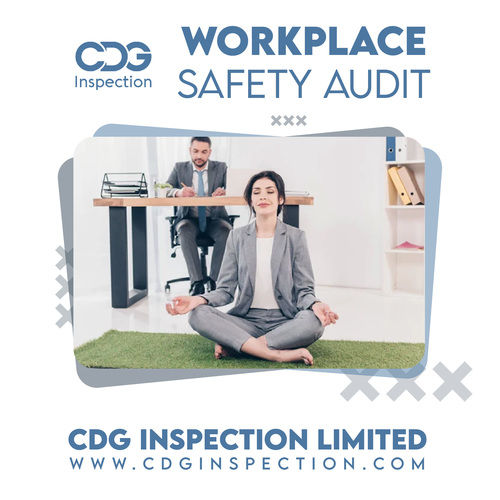Workplace Safety Audit in Mumbai
Product Details:
Product Description
CIL provides workplace safety audit services in Mumbai, Maharashtra , India. CIL is an ISO 17020 accredited inspection agency. In order to glean any valuable insights from safety audits, though, companies must conduct them in accordance with general best practices. These are the key elements that must be present in any good workplace safety audit, 1. Conducting only one workplace safety audit per year can have the unintended consequence of making safety and compliance seem like a recurring goal that must be achieved once annually, rather than a constant mandate. As the date of an annual audit approaches, there may be a ramping up atmosphere created by managers and supervisors working to ensure compliance ahead of the audit. That might discourage them from developing a sense of urgency the rest of the year, leading to relaxed standards. A superior approach could be to schedule various specific safety audits throughout the year on an eleven month schedule, reserving the final month for one comprehensive workplace safety audit. It is important to remember that safety audits are not the same as regular facility inspections, nor should they take the place of them. Facility safety inspections for hazards and their control should be performed with greater frequency, conducted on a weekly basis by supervisors and a monthly basis by management. 2. A safety audit can only be as good as the professionals conducting it, which is why it pays to entrust the process to those with the necessary knowledge and experience. Some companies elect to hire outside consultants or safety professionals in order to guarantee such expertise, but many prefer to keep the operations in house. If employing the latter method, businesses should create safety audit teams consisting of three to five employees well versed in current safety standards. These employees must be educated on all relevant laws, OSHA regulations and other standards, and trained in the art of violation and hazard identification. To ensure objectivity, employees should never inspect their own work environment. A fresh set of eyes is better at spotting whatever issues a supervisor or section manager has failed to notice. 3. Both those performing the audit and those being audited should be prepared for the experience. At least a week prior to a workplace safety audit, the company should inform all affected managers and supervisors that they need to have all records, documents and procedures ready and available for when the audit begins. For its part, the safety audit team should review all previous program area audits and corrective action recommendations, as well as all company, local, state and federal requirements related to the specific program. A refresher on document, inspection and training requirements could also prove helpful. Finally, the scope of the audit should be determined in advance, and should take into account accident and inspection reports along with input solicited from various managers. 4. Exhaustive records area requirement and objective of safety audits. A safety audit team needs to consult all incident reports available for the section which they are auditing, so as to assess where potential problem areas are most likely to exist. Competent incident reports help auditors better apply selective scrutiny to known problem areas. Safety audit teams should also strive for comprehensive reporting in their own audits. When auditors go to the physical location of the selected area to observe work being done, they should ask detailed questions of the employees working in that area to obtain as much relevant information as possible. Having audit checklists that manage to cover all safety objectives and applicable regulations will help auditors make sure they do not neglect anything. 5. Perceptive Data Analysis, After inspecting all documents, written programs, procedures, work practices and equipment, the safety audit teams should sift through the collected material to put together a concise report that details all areas of the program. All safety audit comments, recommendations and corrective actions should consider whether the audited program covers all regulatory and best industry practice requirements, whether those requirements are being met and whether there is documented proof of compliance. It is also important to reach a conclusion regarding how effective employee training has been in producing safe behaviour. Workplace safety audits should both address any and all deficiencies, and include positive feedback for any effectively managed area or component deserving of praise. Modern Technology, Ensuring that all of the above safety audit standards are met becomes much easier. Auditing application allows safety auditors to more easily and effectively test and verify a workplaces compliance status. In addition to capturing all relevant regulations, the application also allows auditors to develop checklists unique to the audit site and scope, migrate previous audits to leverage past results, train auditors to perform team based audits, use custom protocols, manage audit data and create corrective action plans. From the planning to the auditing to the analysis and use of gathered data, every key stage and element of a work place safety audit can be improved upon through the use of cutting edge management technology.
Product details
| Service Mode | Offline |
| Location | Gurgaon & Delhi NCR |
| Inspection Service For | Workplace Safety |
| Inspection Interval | 3 Months |
| Usage/Application | Commercial |
| Mode of Report | Hard Copy,Soft Copy |






